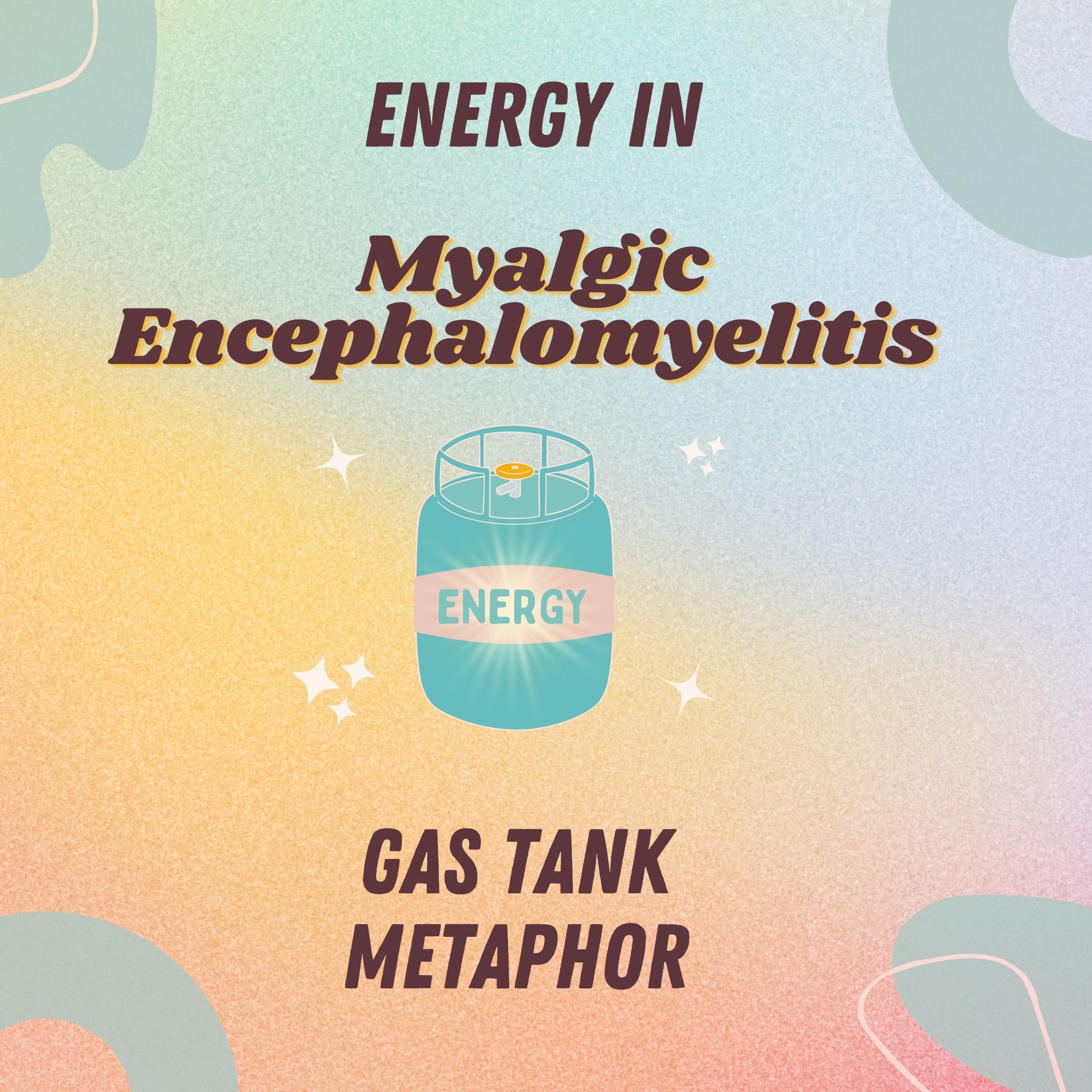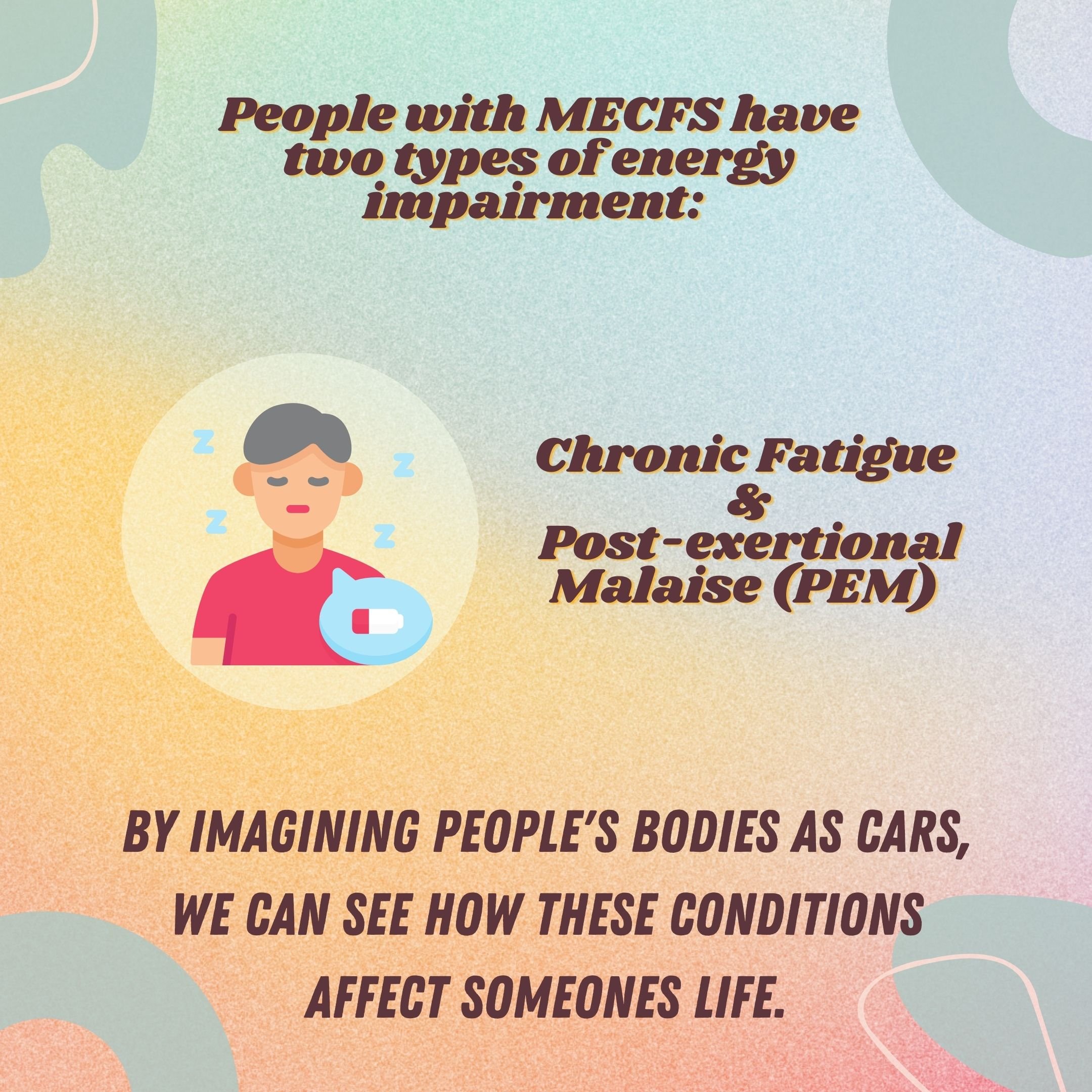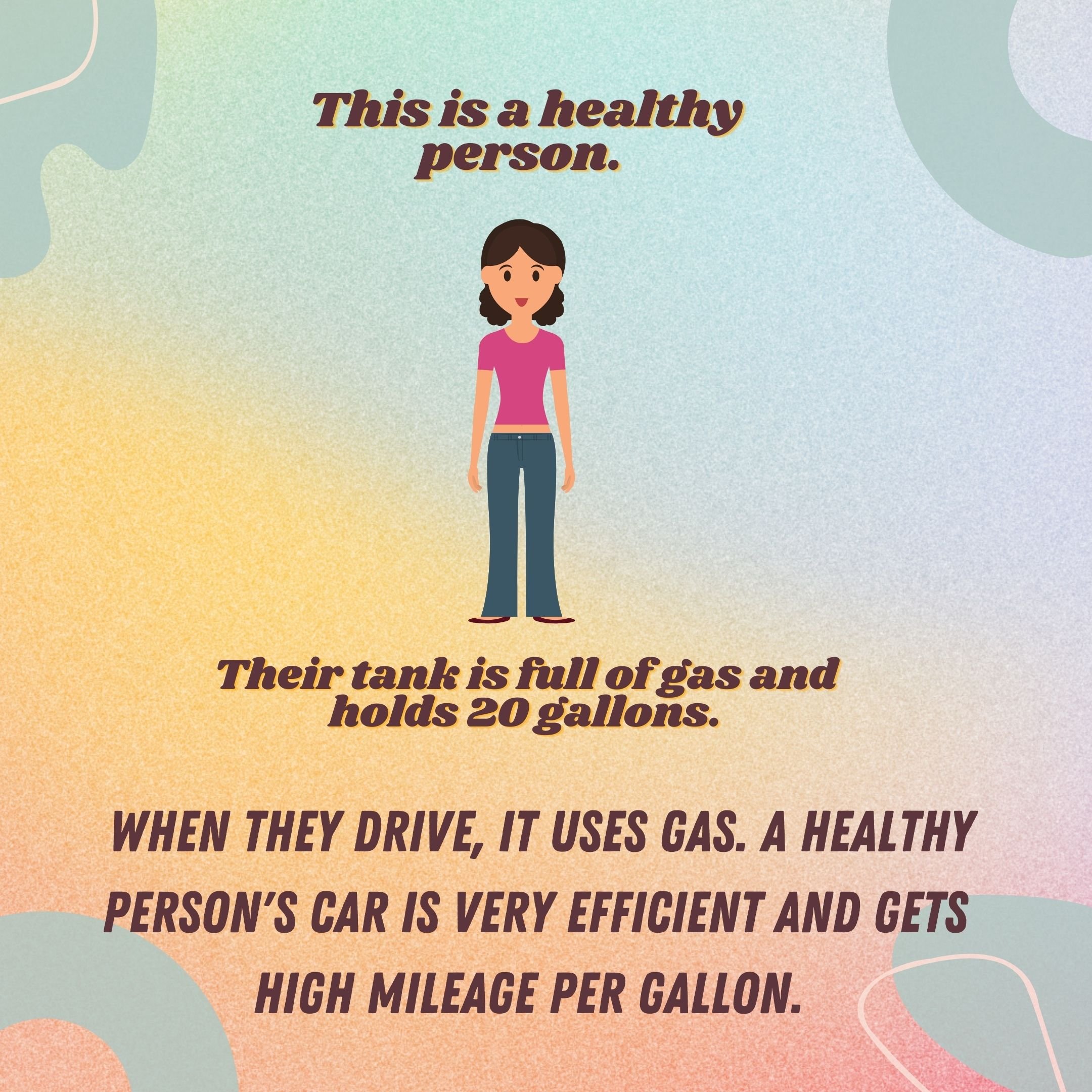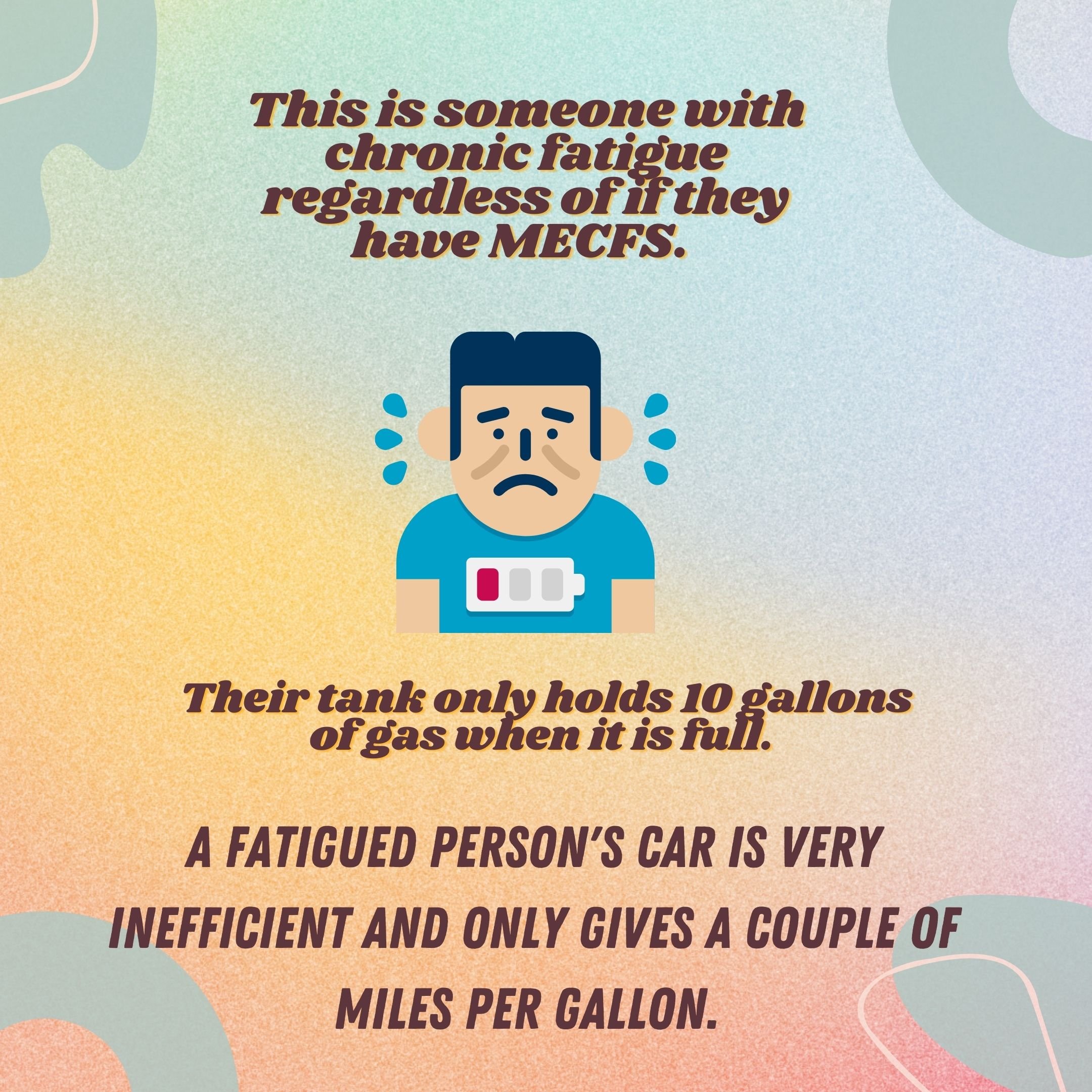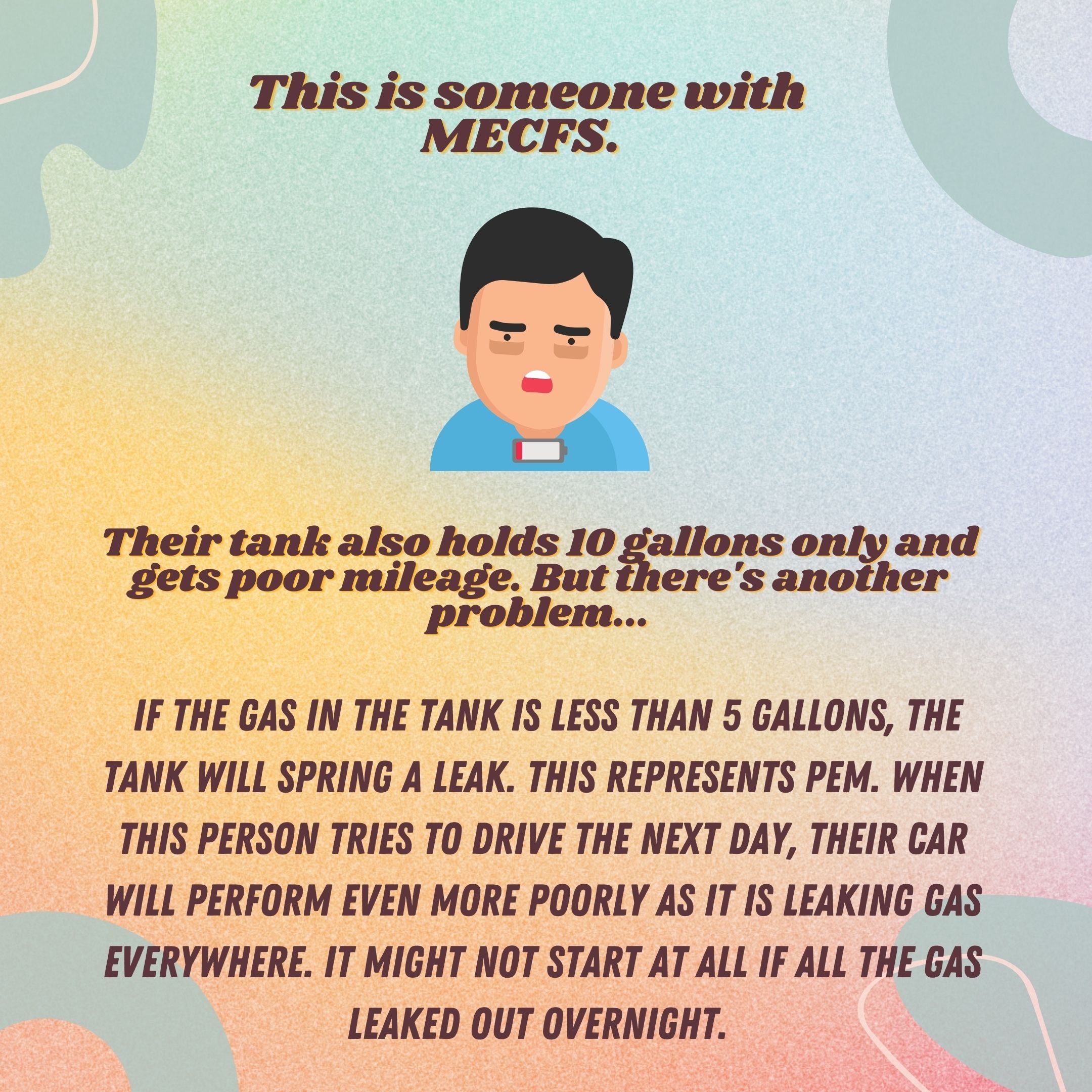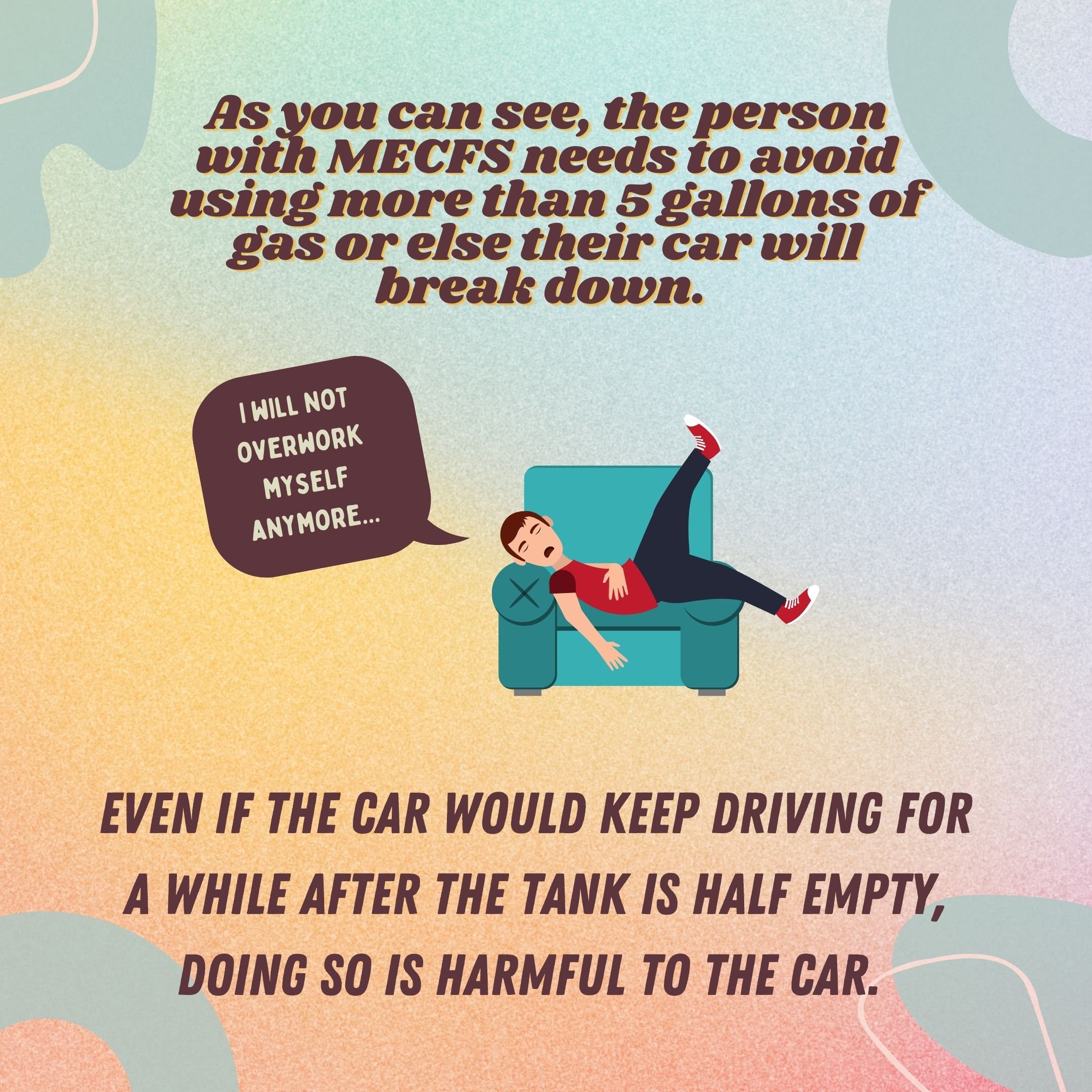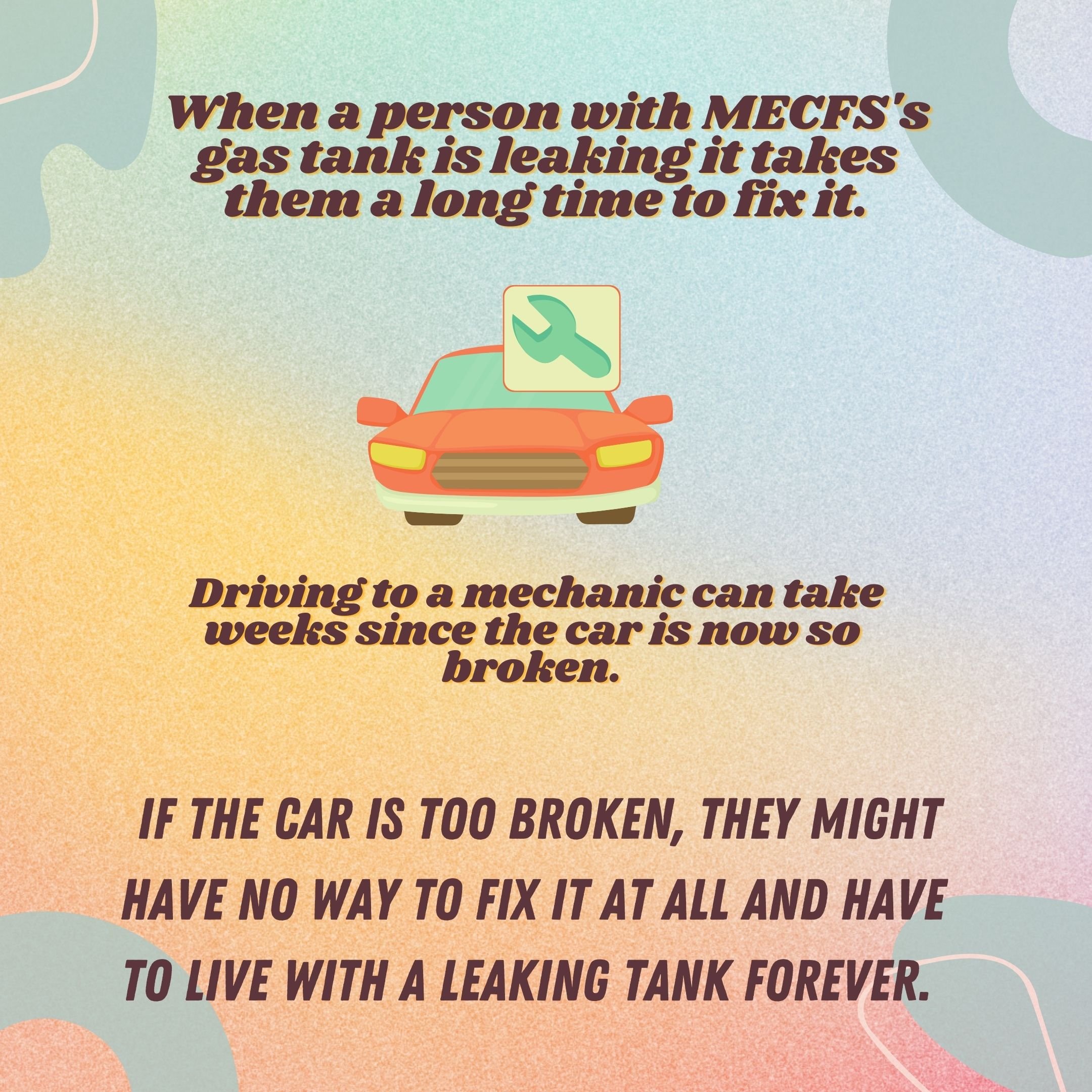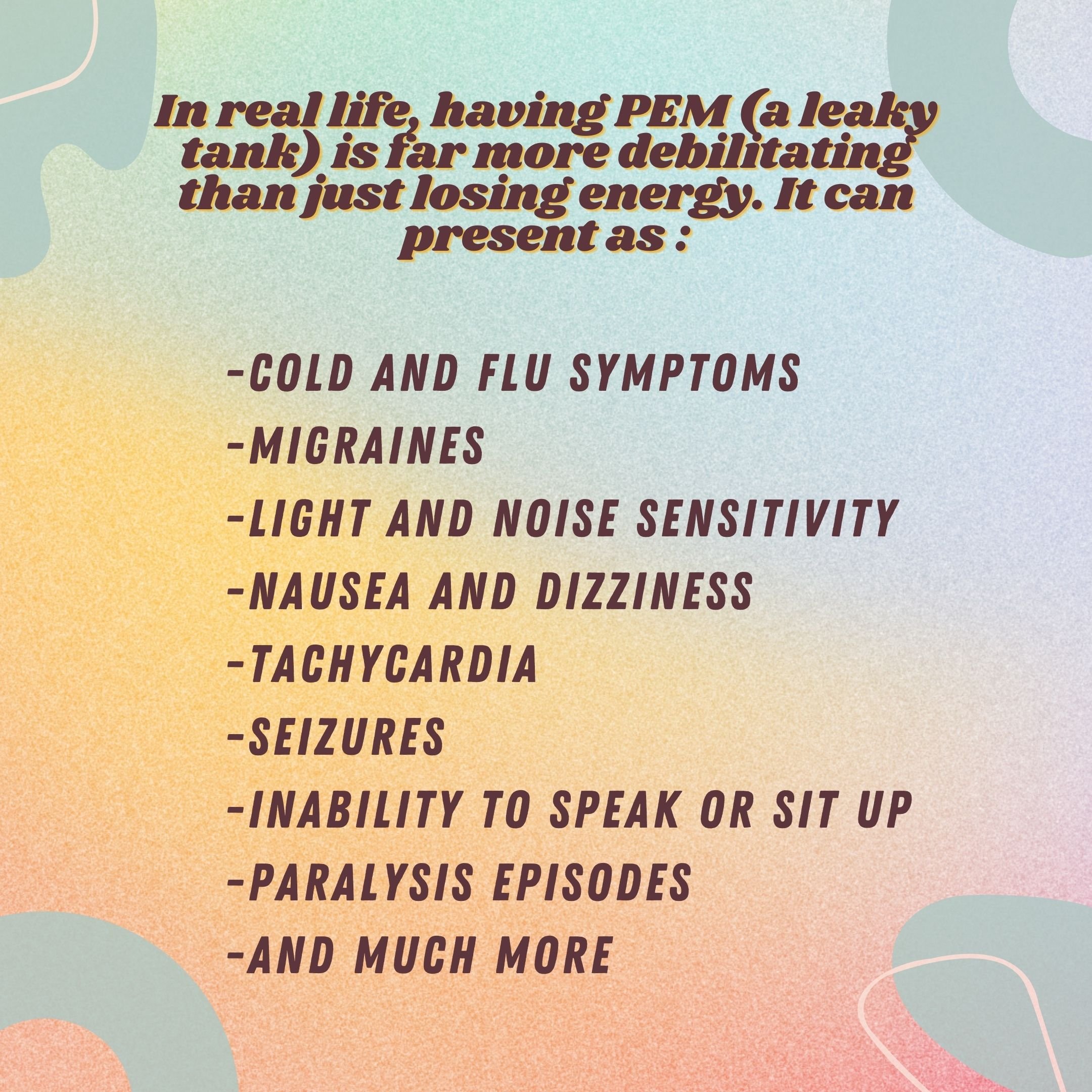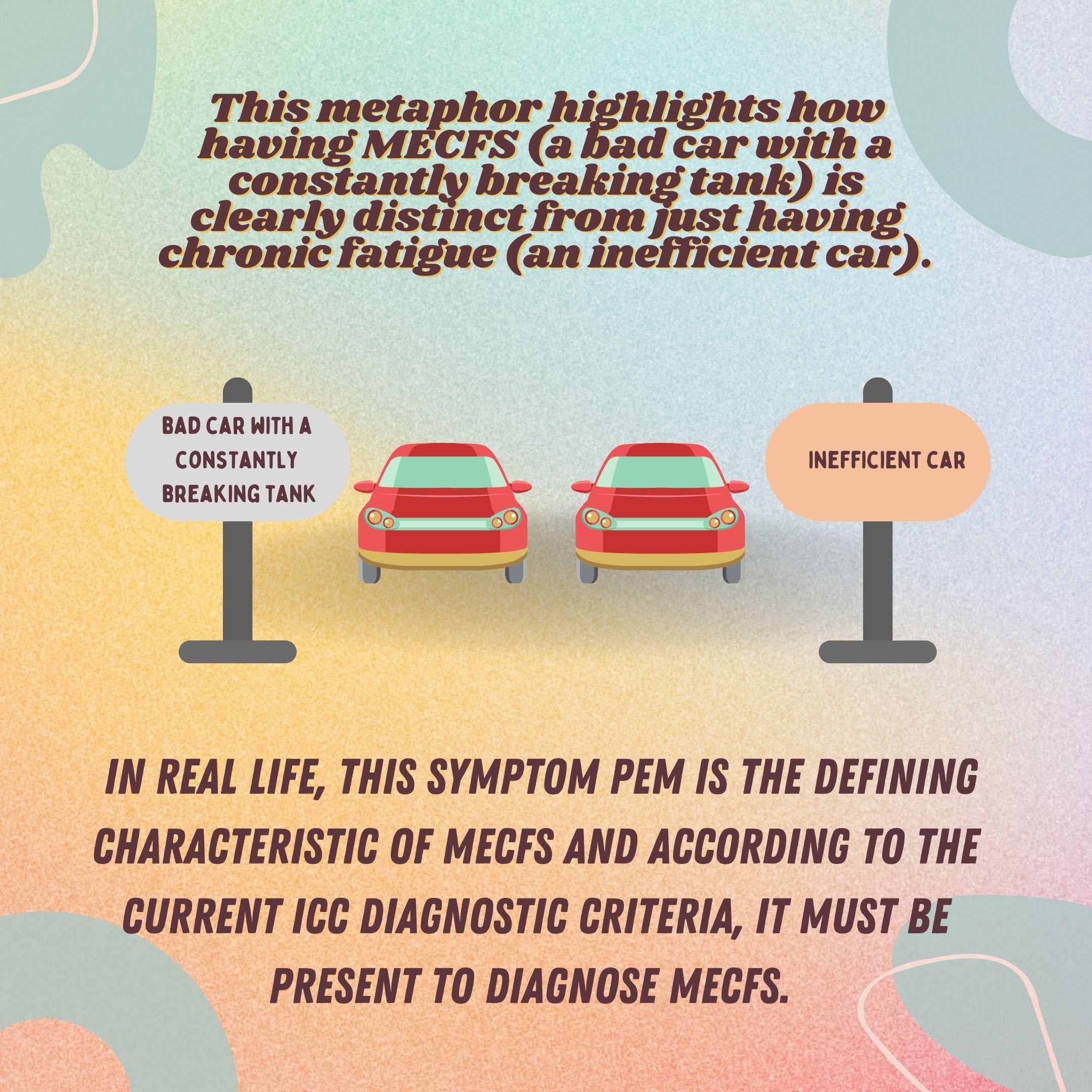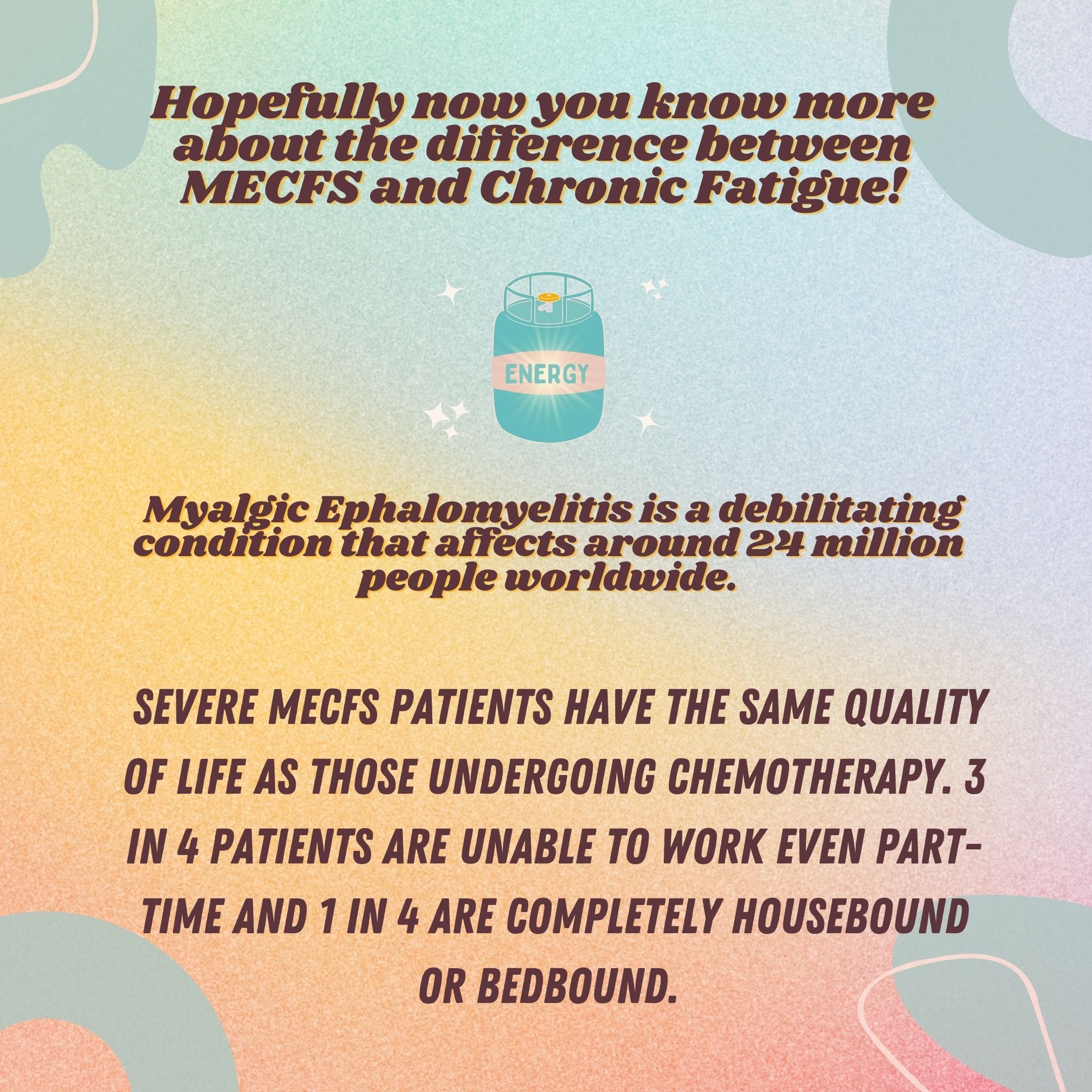MECFS Gas Tank Metaphor
People with MECFS have two types of energy impairment: chronic fatigue and post-exertional malaise (PEM)
By imagining people's bodies as cars we can see how these conditions affect someone's life.
---
This is a healthy person. Their tank is full of gas and holds 20 gallons. When they drive it uses gas. A healthy person's car is very efficient and gets high mileage per gallon.
---
This is someone with chronic fatigue regardless of if they have MECFS. Their tank only holds 10 gallons of gas when it is full. A fatigued person's car is very inefficient and only gives a couple of miles per gallon.
---
This is someone with MECFS. Their tank also only holds 10 gallons and gets poor mileage. But there's another problem. If the gas in the tank is less than 5 gallons the tank will spring a leak. This represents PEM. When this person tries to drive the next day their car will perform even more poorly as it is leaking gas everywhere. It might not start at all if all the gas leaked out overnight.
---
As you can see, the person with MECFS needs to avoid using more than 5 gallons of gas or else their car will break down. Even if the car would keep driving for a while after the tank is half empty, doing so is harmful to the car.
---
When a person with MECFS's gas tank is leaking it takes them a long time to fix it. Driving to a mechanics' can take weeks since the car is now so broken. If the car is too broken they might have no way to fix it at all and have to live with a leaking tank forever.
---
This metaphor highlights how having MECFS (a bad car with a constantly breaking tank) is clearly distinct from just having chronic fatigue (an inefficient car). In real life this symptom, PEM is the defining characteristic of MECFS and according to the current ICC Diagnostic Criteria, it must be present to diagnose MECFS.
---
In real life, having PEM (a leaky tank) is far more debilitating than just losing energy. It can present as
-cold and flu symptoms
-migraines
-light and noise sensitivity
-nausea and dizziness
-tachycardia
-seizures
-inability to speak or sit up
-paralysis episodes
-and much more
---
Hopefully, now you know more about the difference between MECFS and Chronic Fatigue! Myalgic Encephalomyelitis is a debilitating condition that affects around 24 million people worldwide. Severe ME patients have the same quality of life as those undergoing chemotherapy. 3 in 4 patients are unable to work even part-time and 1 in 4 are completely housebound or bedbound.
---
Chronic fatigue and chronic fatigue syndrome or MECFs are two very different things. While both are extremely disabling the addition of PEM or postExterionalMalaisemeans living with myalgic encephalomyelitis aka MECFS causes far more functional impairment.
This post uses the metaphor of a car and a gas tank to illustrate the difference between...
A healthy person (someone with a large gas tank and a fuel efficient car)
A person with chronic fatigue (someone with a small gas tank and an inefficient car)
A person with MECFS (someone with a small gas tank, inefficient car, and easily broken tank)
Unlike people with fibro, MS, cancer, heart failure, COPD and many more autoimmune and autoinflammatory diseases that cause chronic fatigue, people with MECFS do not have the choice to push through their fatigue. When they do so they break their energy (gas tank) and can permanently lose their functional ability.
This is why "just trying" GET or CBT or any other therapy that encourages pushing through chronic pain with a positive mindset is so dangerous for people with MECFS.
When MECFS advocacy groups highlight the difference between PEM and chronic fatigue we don't do so to minimize how terrible and debilitating it is to live with chronic fatigue. We do so to explain why people with MECFS not pushing through their fatigue is not because they are less motivated or weaker than those with fibromyalgia or other fatiguing chronic illness but because they are protecting themselves from permanent damage.
If you experience severe neurological and physiological side effects 24-48 hours after physical or mental exertion this indicates you suffer from PEM. MECFS is no longer a diagnosis of exclusion and if you have this symptom alongside another autoimmune or autoinflammatory disease you may also have MECFS and benefit from pacing and appropriate accommodations. Understand that PEM is not a normal part of chronic fatigue. It is the hallmark of MECFS.
1 in 100 people is estimated to suffer from this disease so it is not rare. Taking early action to address PEM and not push through your fatigue can prevent deterioration of health and permanent loss of functioning.
